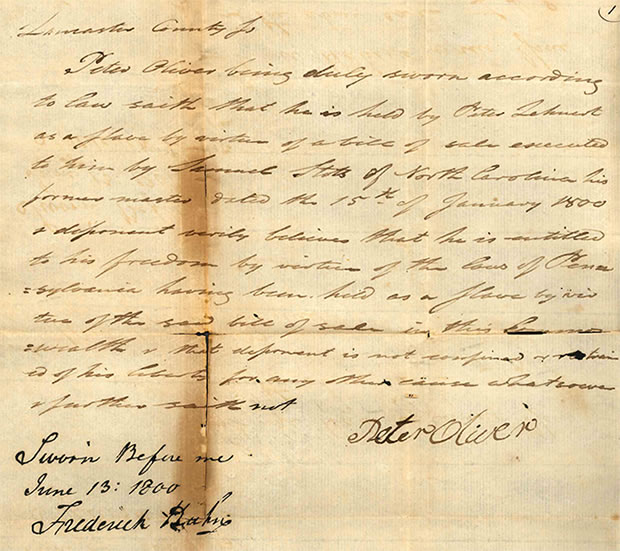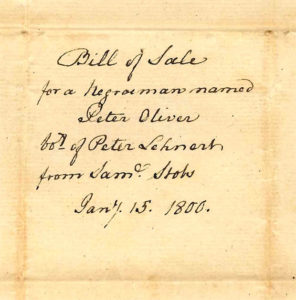How Peter Oliver freed himself
In June of 1800 an enslaved man from North Carolina walked into the courthouse in Lancaster and demanded his freedom. And he got it.


The judge, Frederick Kuhn then wrote out an order to immediately release Oliver. The law that he cited was an amendment to the 1780 Act for the Gradual Abolition of Slavery, passed in 1788 to clarify the first law and to close loopholes. Kuhn quoted the appropriate clause
that all & every slave & slaves who shall be brought into this State by persons inhabiting or residing therein or intending to inhabit or reside therein shall be immediately considered deemed & taken to be free to all intents & purposes
Kuhn’s order concluded:
I do therefore on due advisement & consideration had of all & singular the premises liberate set free & discharge the said Peter Oliver Negro from the said Peter Lehnert
(emphasis added)

A Moravian memoir of his life states that Peter Oliver “bought himself free.” Despite being a slave, he had the skills and determination to earn the money for his own purchase. Peter Lehnert, the Pennsylvania man who bought Oliver, was a Moravian from the Lititz area. Lehnert knew the law, in fact he seems to have been a lawyer. (He became a justice of the peace in 1802, and the household inventory made when he died included law books.) The North Carolina man who sold him, another Moravian, had a brother who was a brickmaker in Lititz. All the pieces fit to form a theory of what happened. Peter Oliver earned the money that Lehnert used to buy him. Then Lehnert brought Oliver to Pennsylvania as a slave with the intention of allowing him to claim his freedom.
After he did, remarkably, Peter Oliver returned to North Carolina. He continued living in the Moravian communities of Salem, working as a potter and farming a few acres of rented land. He married, had two children and died there in 1810. You can read more about this extraordinary man on the Old Salem website.
The papers documenting the freeing of Peter Oliver are housed in the archives at LancasterHistory.org.
